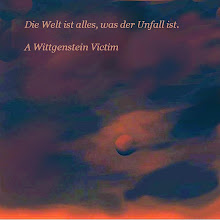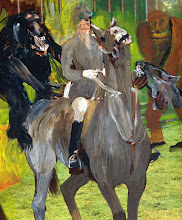Fugue forms occur freely in nature. They are naturally occurring formalisms. The golden age of artificial fugues is generally considered to be the 18th century — in particular the music of Bach. The 20th century produced some known masters of the artificial fugue not only in sound. Czech Orphist Frantisek Kupka painted color fugues in Paris before World War I. Orphism, a movement related to Cubism was sometimes known as simultaneism. The Swedish artist Viking Eggeling drew contrapuntal orchestrations in black and white. Marcel Duchamp’s Tum’ (1918) is a fugue piece.
But fugues are common in any time, in any medium — spatial, temporal or inside human will and will—lessness.
A fugue is a paradoxical form. It is both immediate and complex. In its immediacy it is highly organized, in its complexity it is wild. A fugue is in a state of rapid metamorphosis even if it is slow. Thus it is both elaborately formed and formless. Forms appear suddenly, seem eternal and disappear just as suddenly. This may seem by chance and maybe it is. Chance being nothing more or less than a set of all possible occurrences at any given instant. The acts of human will are as much chance as not chance. How useful is chance?
A fugue starts simply and becomes inestimably complicated. Fugues are composed of riddles — subject and counter subject, question and answer. Fugues are sphinx like, mysterious or cryptic.
A subterfuge is a very common natural fugue. At any given instant it is completely present in total but equally distant and complex throughout its extended whole which is the deception.
Any given moment is called an ‘episode’ of the fugue —essentially a device to distract attention from the subject. If the subject is the subterfuge, the episode is the subterfuge of the subterfuge and so on.
The fugue is such a magnetizing mesmerising force — you are transported by it whether you will or not.
Our street had a nocturnal fugue recently and we were caught up in it. The night started in the morning. No fugue comes totally unprepared or unannounced. But the climax is mostly still a surprise. An artificer of fugues must be very inventive to come close to the surprise of a natural fugue.
It was a Strindberg day of tormented paradise. The air came straight from the asphalt turbine desert.
A kind of dervish madness all around and up and down the street. All day long people did unexpected things or turned up in unexpected places but the evening or night scene was the most forbidden and unexpected.
We passed the waiters’ house on the corner as we do almost every night. This was an act of supreme repetitiveness on our part. It is a habit we just can not break. It’s the robotic part of our organism —the one which makes us brothers of machines. As we approached the corner we saw the end of a group scene. A tall blond man in white clothing broke away from a man and a woman, crossing the street and shouting all the while. He had a few words with an old timer amongst the waiters, black and secretive as the night. The couple moved stiffly around one another like cats on the street. The blond man looked at us too. We turned the corner nearly together. He was everywhere at once.
Saying as we passed to the black waiter, “voilà, see you”.
Otherwise they seemed to be speaking in a sort of pidgin Norwegian. See whom? They certainly had the evil eye.
It just proves habits are dangerous. They know we pass that way every night. Someone once spoke to us quite close out of the darkness: “Have you ever wondered how rich you’d be if you had a pound for each time you walk around the block?” When we looked no one was there. The cold servant eye sizes you up — you don’t feel them doing it, their only revenge. The Genet look. An instant travesty. If we had a dog, we’d go out too.
But we weren’t really the subject of the fugue.
The ‘Viking’ walked on in front of us, kicking lamp posts, moving works signs around, talking to himself, then disappearing up an alley. On our way back — we repeat the way not just the walk every night, all of a sudden he came back out of the alley. He looked straight at us looking at him. As if he knew we would be passing that way again. Danger was palpable. If not imminent. But still undirected.
We tried to ignore him naturally but we felt him right behind us. So all of us saw what came next more or less simultaneously if at varying angles and tempi. The couple was no longer in the middle of the street but they weren’t gone either. They had moved halfway into the shadows but in our curved line of vision. In the secluded corner formed by a boundary wall and the glass front of Ladbrokes betting shop they were having sexual intercourse. At least it seemed to be so — the man’s legs were now naked pale and long in the greenish light and he was covering the woman’s body squeezed up against the wall and glass with his body. The woman was in the shadows. It was quite a breathtaking view. As one would imagine soldiers raping the natives when they conquer a village on a cold night.
Unfortunately the sequence did not end there. The fornication in the corner had consequences. Whilst we were sleeping someone took a long old screwdriver from a tent next to our house and used it to penetrate the ‘petit verre’ of our car. The unknown robber stole only a pair of transparent gloves and green paper towels you can take for free from the petrol stations. He left his tool on the front seat of our car. The bride had been stripped and laid by the rival bachelor against the ‘Grand Verre’ of the betting shop. In the roofless baraque for pissing, fucking and weddings. The robber broke some other glass hymen down the road with a borrowed screwdriver driven by an indiscriminate transitive ecstasy whose danse macabre had engulfed everyone on the street except the cold black waiter.

















.jpg)














No comments:
Post a Comment